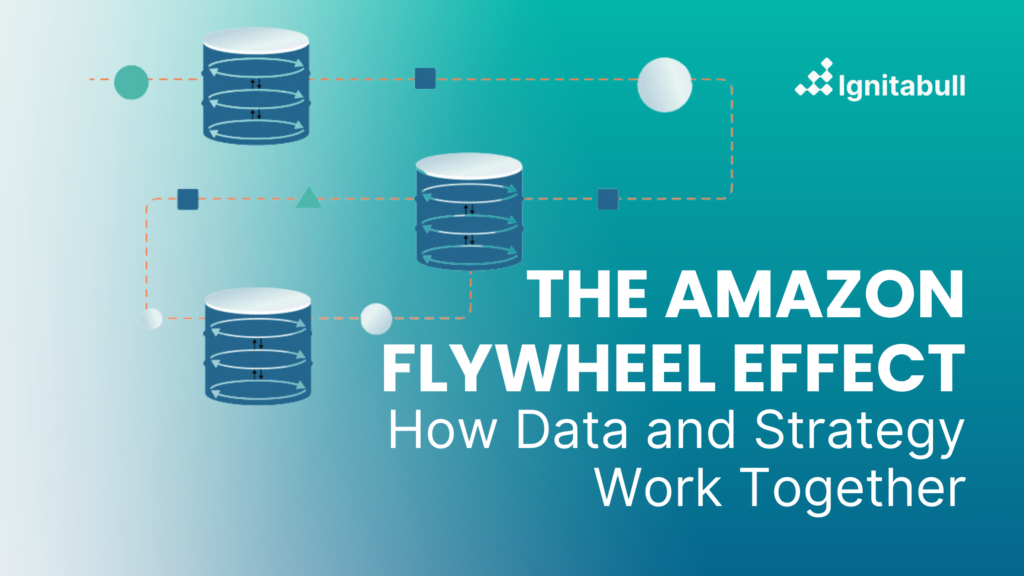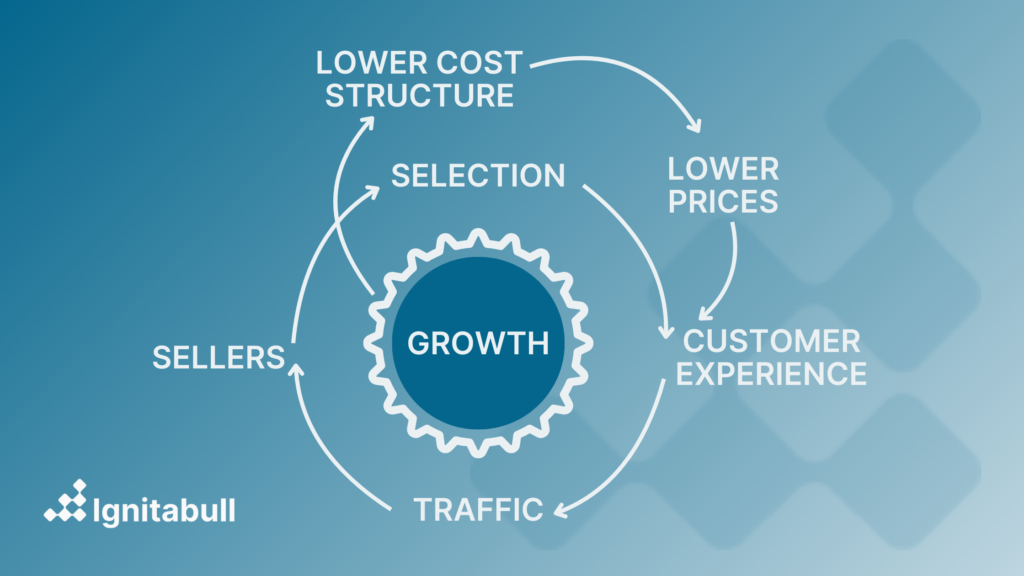
When Jeff Bezos introduced the concept of the “Amazon Flywheel Effect,” he wasn’t just outlining a strategy for his company—he was creating a blueprint for sustainable business growth that has become legendary in the world of e-commerce and beyond. At its core, the Amazon Flywheel Effect is a self-reinforcing cycle where strategic decisions and data-driven insights fuel growth, efficiency, and customer satisfaction.
In this blog, we’ll unpack the components of the Amazon Flywheel, explore how data and strategy work in tandem, and discuss actionable ways you can apply these principles to your own Amazon business or other ecommerce platforms.
What is the Amazon Flywheel Effect?
The Flywheel Effect is a concept borrowed from Jim Collins’ book Good to Great. It describes how small, consistent efforts build momentum over time, eventually creating unstoppable growth. Jeff Bezos applied this idea to Amazon’s business model, creating a cycle that reinforces itself:
- Lower Prices ➔
- Improved Customer Experience ➔
- Increased Traffic ➔
- More Sellers and Products ➔
- Lower Costs (via Economies of Scale) ➔ Back to Step 1

This virtuous cycle keeps spinning, driving more growth with each rotation. What makes the Flywheel so effective is its ability to leverage data and SEO marketing strategies at every stage to accelerate momentum.
The Role of Data in the Flywheel
Amazon’s Flywheel thrives on data—and lots of it. Here’s how data powers each phase of the cycle:
1. Lower Prices through Data-Driven Insights
Amazon uses advanced analytics to understand purchasing patterns, identify cost-saving opportunities, and predict demand. Data allows them to price competitively without sacrificing profitability, driving customer loyalty.
Example: Dynamic pricing algorithms adjust product prices in real-time based on factors like competitor pricing, demand, and inventory levels.
2. Improved Customer Experience through Personalization
Amazon’s recommendation engine is a prime example of data at work. By analyzing customer behavior, purchase history, and browsing patterns, Amazon delivers tailored product suggestions that enhance the shopping experience.
Fun Fact: Recommendations account for 35% of Amazon’s total revenue.
3. Increased Traffic through Targeted Marketing
Amazon leverages data from its ecosystem (search behavior, ad clicks, reviews) to drive targeted advertising campaigns and digital marketing strategies, increasing visibility and attracting new customers.
4. More Sellers and Products through Market Insights
By analyzing market trends and seller performance, Amazon identifies gaps in its catalog and encourages sellers to fill those gaps, ensuring customers find exactly what they need.
5. Lower Costs through Operational Efficiency
Amazon’s fulfillment network is a logistical masterpiece. By tracking inventory and shipment data, they streamline operations, minimize waste, and reduce costs—all while improving delivery speed.
Key Metric: 73% of Amazon transactions in the U.S. were made by Amazon Prime members, (as of December 2022), driven largely by fast, reliable shipping.
The Role of Strategy in the Flywheel
While data provides the fuel, strategy provides the direction. Here’s how strategic decisions amplify each phase of the Flywheel:
1. Customer Obsession
Amazon’s customer-first strategy ensures that every decision—from pricing to product selection—is designed to delight the customer. By building trust and loyalty, they ensure repeat business and word-of-mouth marketing.
2. Relentless Innovation
From launching Amazon Web Services (AWS) to introducing cashier-less Amazon Go stores, Amazon constantly innovates to stay ahead of competitors and add new revenue streams.
3. Seller Empowerment
Amazon’s strategy to attract third-party sellers has created a diverse marketplace that benefits customers with more choices. In 2022, third-party sellers accounted for 60% of Amazon’s sales.
4. Scaling with Economies of Scale
Amazon reinvests its profits into infrastructure, technology, and talent, creating efficiencies that lower costs as the business scales.
Applying the Flywheel Effect to Your Business
No matter your industry or business size, you can harness the Flywheel Effect to drive growth. Here’s how:
1. Focus on Customer Experience
- Invest in personalization tools, easy-to-use interfaces, and responsive customer service.
- Regularly gather and analyze customer feedback to identify pain points.
2. Leverage Data Analytics
- Use tools like Google Analytics, Shopify Insights, or Amazon Brand Analytics to track performance.
- Identify patterns in customer behavior to inform decisions about pricing, inventory, and SEO marketing.
3. Build Strategic Partnerships
- Collaborate with complementary businesses or third-party sellers to expand your product offerings and reach.
4. Reinvest in Growth
- Allocate profits toward improving technology, scaling operations, or testing new marketing channels.
- Use data to identify the most effective areas for reinvestment.
Final Thoughts: The Flywheel in Action
The Amazon Flywheel Effect is a testament to the power of combining data and strategy to create a self-sustaining cycle of growth. By focusing on the customer, leveraging data-driven insights, and making strategic decisions, Amazon has built an empire that continues to spin faster and stronger with each turn of the Flywheel.
Whether you’re an Amazon seller, a digital marketer, or an e-commerce entrepreneur exploring ecommerce platforms, understanding and implementing the Flywheel Effect could be the key to unlocking exponential growth.
Check out our blog page for more Ecommerce-related topics!
Let’s make your Flywheel spin! 🚀

